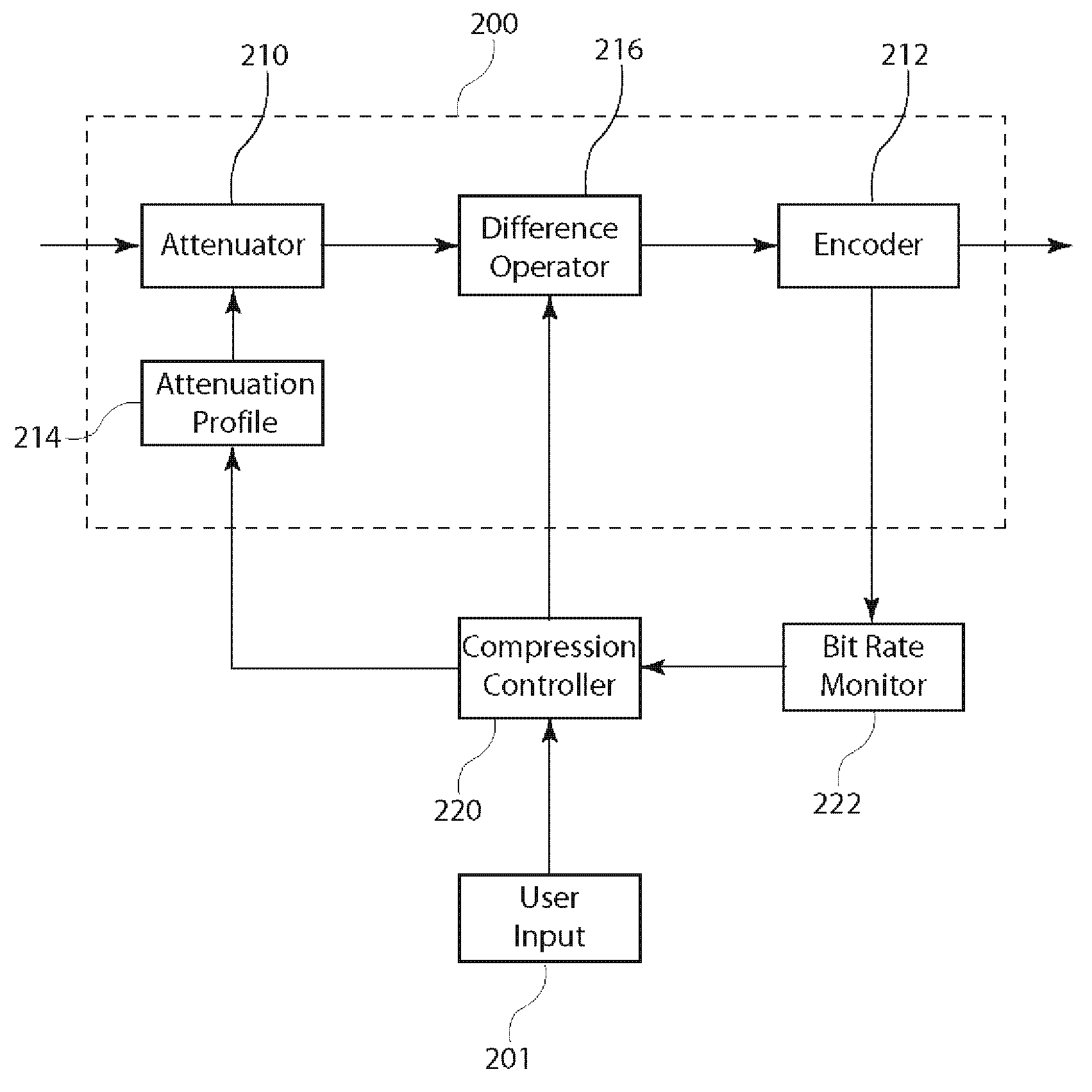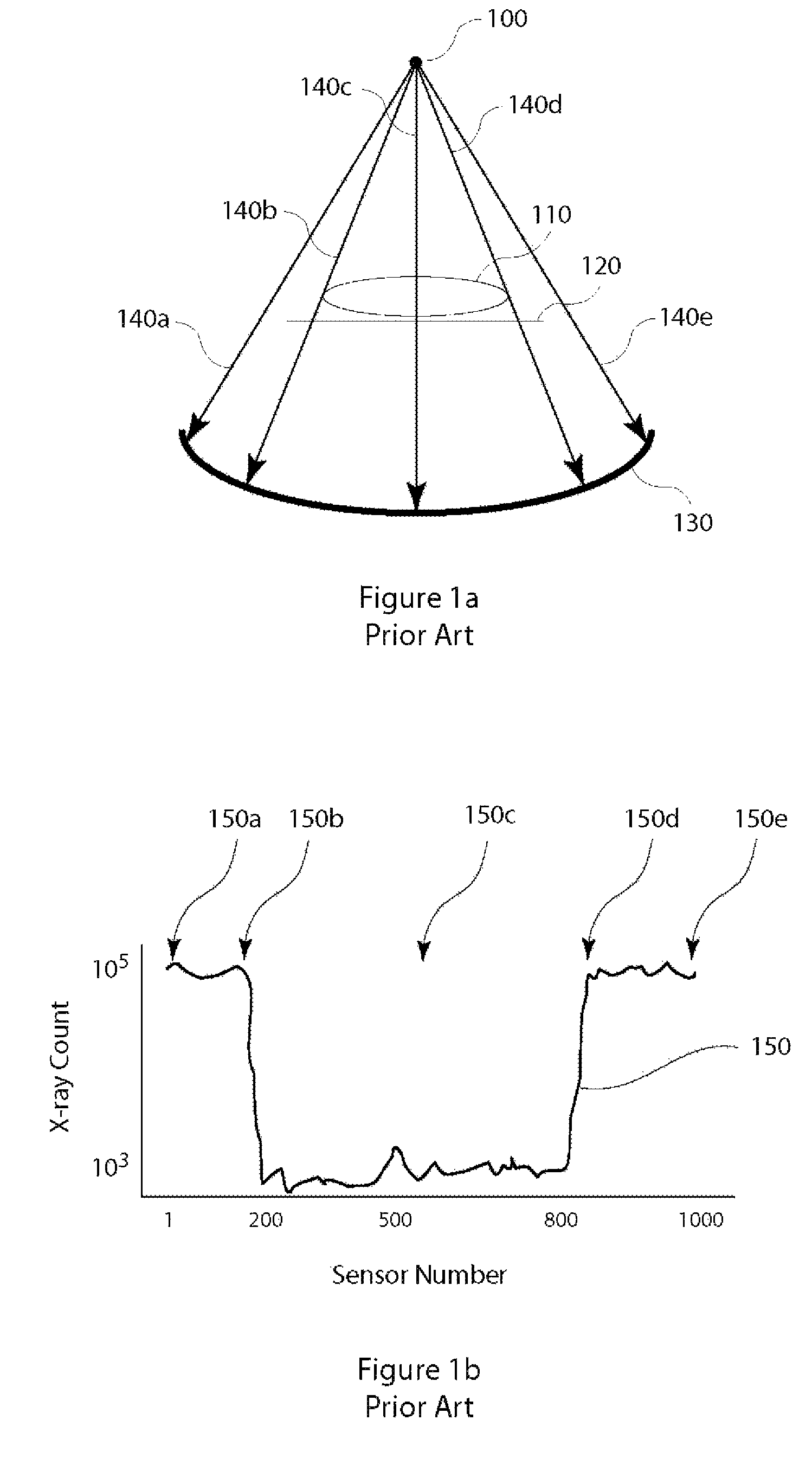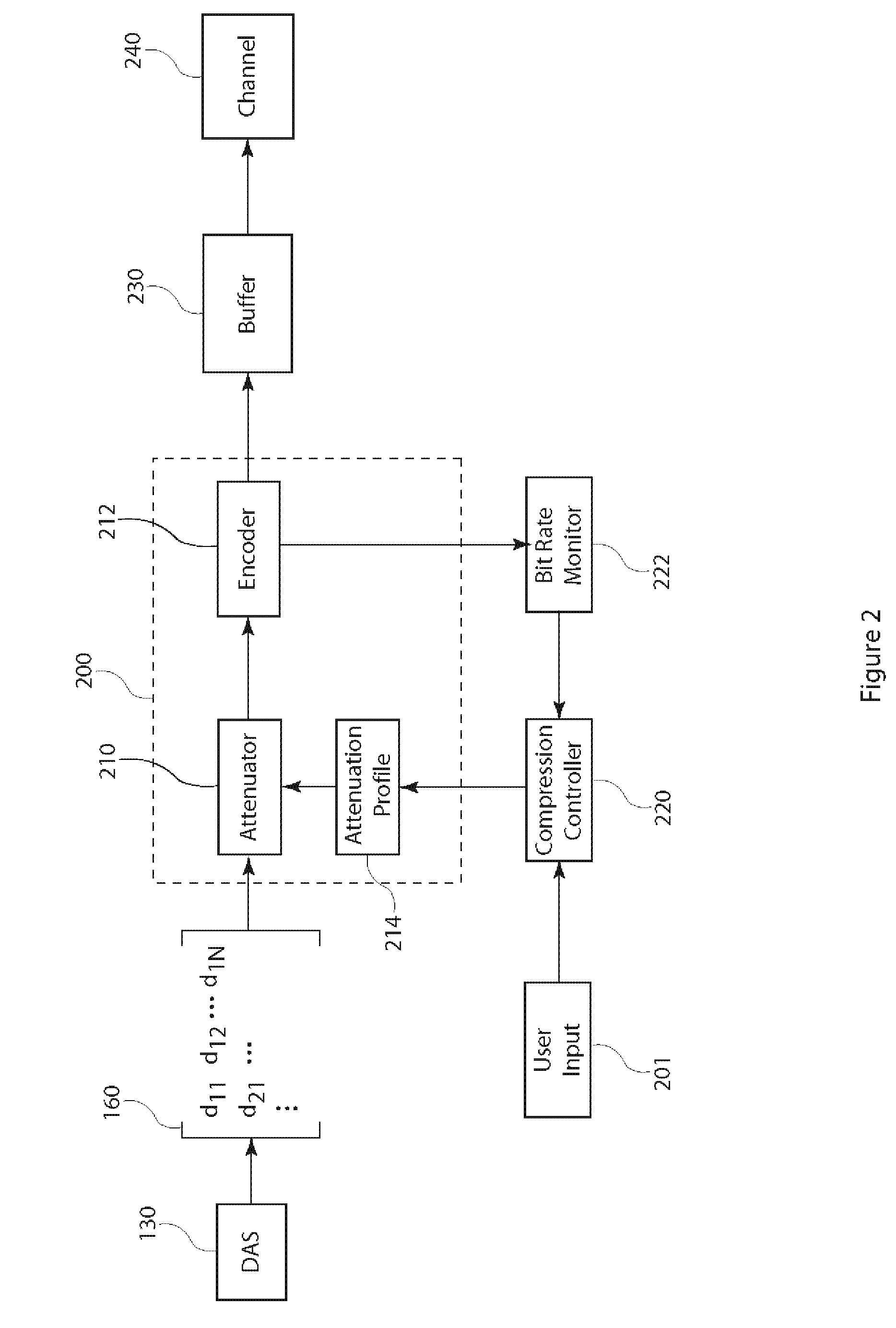Adaptive compression of computed tomography projection data
a computed tomography and projection data technology, applied in the field of compression and decompression of projection data, can solve the problems of reducing the efficiency of data transfer, reducing the bandwidth of data delivered, and requiring large volumes of projection data to be transferred and stored. the effect of reducing the storage capacity
- Summary
- Abstract
- Description
- Claims
- Application Information
AI Technical Summary
Benefits of technology
Problems solved by technology
Method used
Image
Examples
Embodiment Construction
[0033]The present invention is directed to compression and decompression of projection data in the Radon transform domain, also known as the projection domain or sinogram domain. Compression of projection data allows more efficient data transfer from the data acquisition subsystem of a CT system to a storage subsystem and an image reconstruction processor. Later decompression of the compressed projection data is applied prior to image reconstruction of a spatial domain image. Compression and decompression can be applied to one set of projection data resulting from one view or to multiple sets of projection data resulting from multiple views. The present invention is independent of the number of views used by the image reconstruction processor to compute a spatial domain image.
[0034]Embodiments of the present invention can be used for compressing and decompressing projection data in a medical computerized tomography scanner for generating cross-sectional images of a human body and in...
PUM
 Login to View More
Login to View More Abstract
Description
Claims
Application Information
 Login to View More
Login to View More - R&D
- Intellectual Property
- Life Sciences
- Materials
- Tech Scout
- Unparalleled Data Quality
- Higher Quality Content
- 60% Fewer Hallucinations
Browse by: Latest US Patents, China's latest patents, Technical Efficacy Thesaurus, Application Domain, Technology Topic, Popular Technical Reports.
© 2025 PatSnap. All rights reserved.Legal|Privacy policy|Modern Slavery Act Transparency Statement|Sitemap|About US| Contact US: help@patsnap.com



